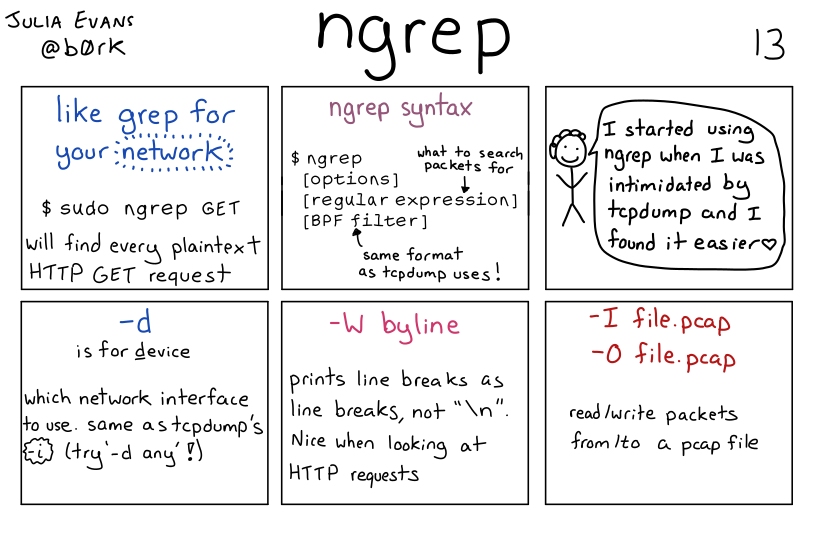
Here's a preview from my zine, Bite Size Networking! If you want to see more comics like this, sign up for my saturday comics newsletter or browse more comics!
 get the zine!
get the zine!
read the transcript!
like grep for your network
(network is surrounded with glowy lines)
$ sudo ngrep GET will find every plaintext HTTP GET request
ngrep syntax
$ ngrep
[options]
[regular expression]
[BPF filter]
(“regular expression” is what to search packets for)
“BPF filter” use the same format as tcpdump uses!
panel 3
Illustration of a smiling stick figure with curly hair.
person: I started using ngrep when I was intimidated by tcpdump and I found it easier (heart)
-d
is for device
which network interface to use. same as tcpdump’s -i (try -d any!)
ngrep
-W byline
prints line breaks as line breaks, not “\n”. Nice when looking at HTTP requests
-I file.pcap -O file.pcap
read/write packets from/to a pcap file